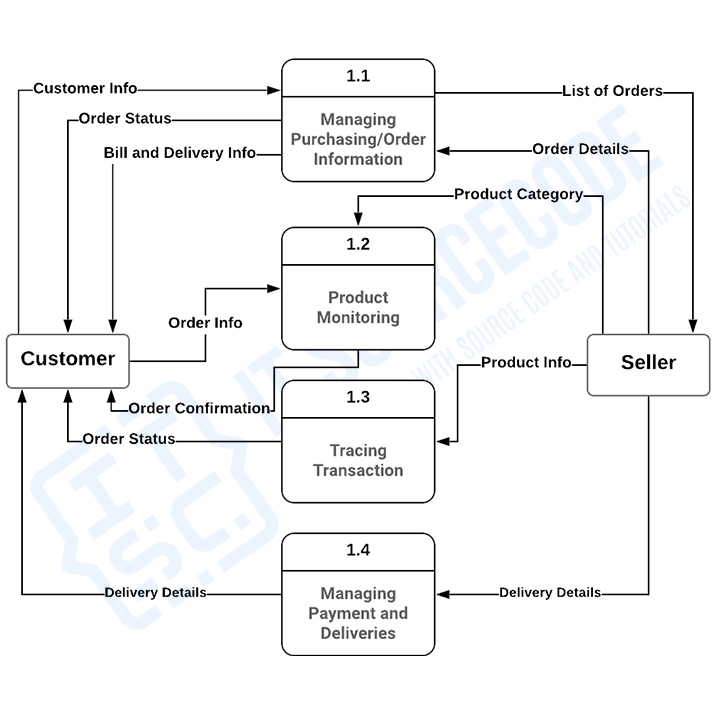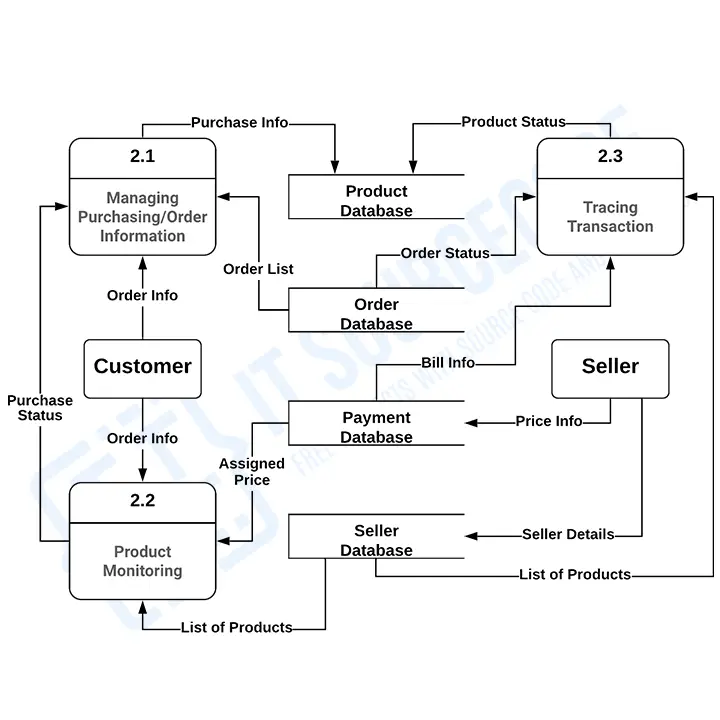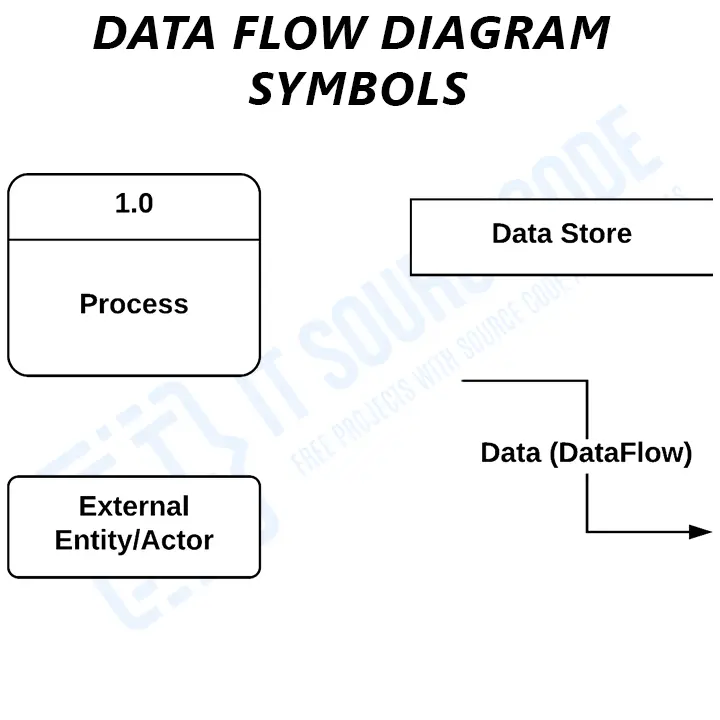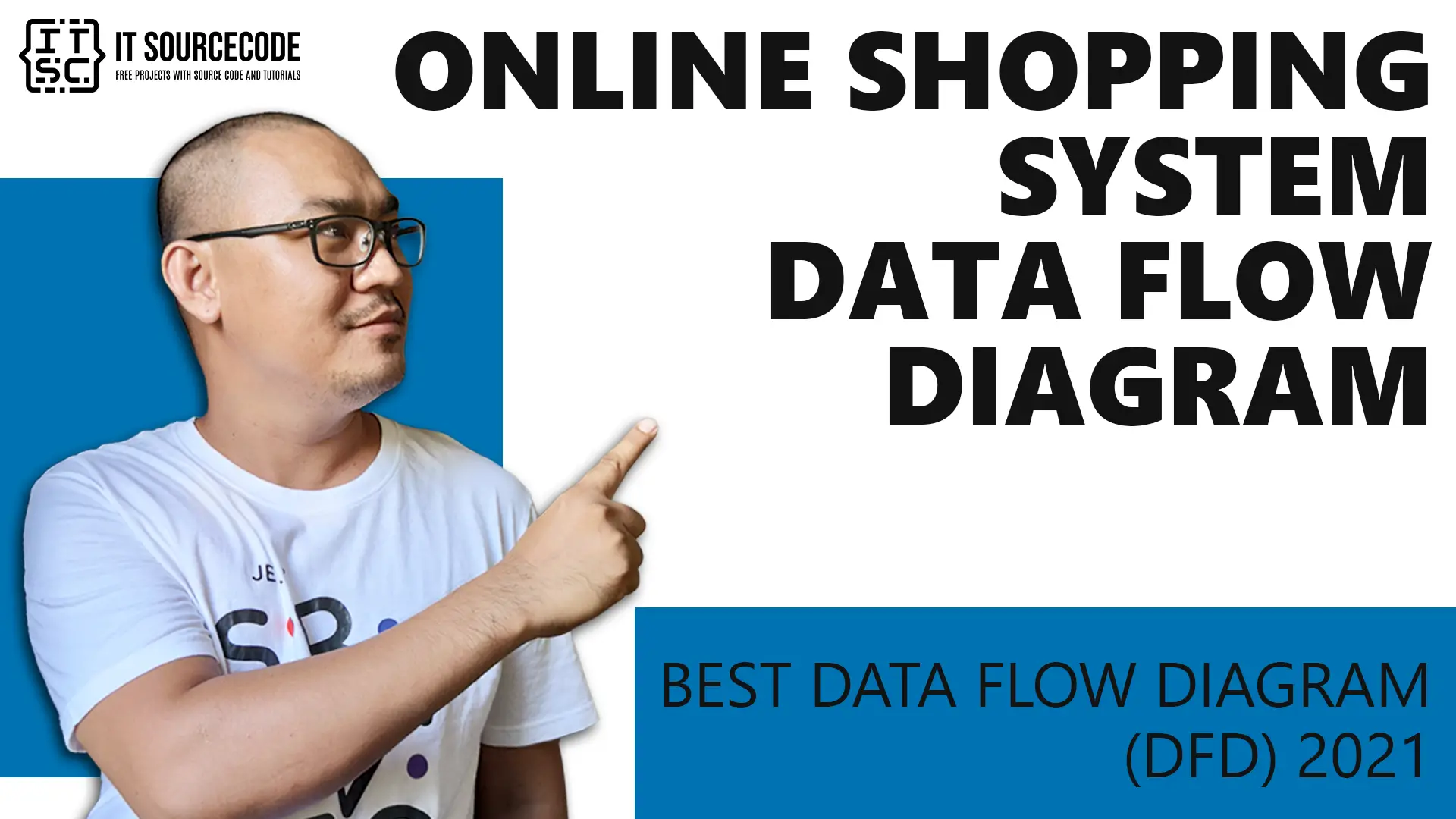The DFD (Data Flow Diagram) for Online Shopping System describes the overall “flow” of data on the project. It is used to document the transformation of data (input-output) for project development.
The online shopping system DFD consists of DFD levels 0, 1, and 2. It also uses entities, processes, and data to define the whole system.
Project Details
The table shows the overview and details of the data flow diagram and has complete information about the project.
| Name: | Online Shopping System Data Flow Diagram (DFD) |
| Abstract: | The Online Shopping System Data Flow Diagram (DFD) shows the structure of the project in terms of its data management. It contains important details on the flow of data and alternatives present in the project. |
| Diagram: | DFD is also known as Data Flow Diagram |
| Tools Used: | Diagraming tools that provide data flow diagram symbols. |
| Designer: | ITSourceCode.com |
What is Online Shopping System DFD?
An online shopping app or system is the same or half-alike an e-commerce website. It works the same also as other e-commerce platforms. However, there are some differences such as in customer or user experience.
One of the methods used for online shopping system development is the DFD (data flow diagram). It represents the system’s major processes and alternatives that generate the internal flow of data. Additionally, the data was properly categorized to illustrate the online shopping system structure.
Take Note: DFD is not part of the Online Shopping System UML Diagrams, but they complement each other in explaining the project activities, behaviors, interactions, and structure.
Importance of Data Flow Diagram (DFD)
The importance of the data flow diagram (DFD) for an online shopping system is to show the developers the actual happenings in the system. This is done by visualizing the system’s data management at various levels.
Furthermore, the DFD levels were used to discuss the system’s data flow. These levels have their part in expounding the system’s data flow structure details. It is then applied in creating Online Shopping System ER Diagram.
Data flow diagrams not only describe the flow of data but also denote the steps involved in transferring data from one process to another. As a result, the data was transformed from input to output.
DFD Level 0 Online Shopping System
The context diagram is an alternative name for the Level 0 DFD Diagram for Online Shopping System. Users, the main process, and data flow make up its parts. Also, the project concept is demonstrated using the single process visualization.
DFD Level 0 shows the entities that interact with a system and defines the border between the system and its environment. This diagram also depicts the online shopping system at a high level.

The illustration presents the main process in a single node to introduce the project context. This context explains how the project works in just one look. The user feeds data into the system and then receives the output from it.
In addition to this, you will perceive through the diagram that there is already the presence of data flow. Though the process is very general, the flow of data is clear. Nevertheless, just modify this diagram to meet the other requirements and include other matters regarding shopping management.
Level 1 DFD for Online Shopping System
The “detonated view” of the context diagram is the DFD Level 1. Its function is to deepen the concept derive from the context diagram.
Specifically, level 1 shows the broader details of Level 0. This is to clarify the paths (flow) of data and its transformation from input to output.

The designed diagram portrays four different scenarios: managing purchasing information, product monitoring, tracing transaction, and managing payment and deliveries.
Level 2 DFD for Online Shopping System
Level 2 DFD for Online Shopping System is also the highest abstraction of the data flow diagram. This level also broadens the idea from the DFD level 1. It includes the sub-processes from level 1 as well as the data that flows.

However, not all of the processes in the project must have sub-processes. Only provide this diagram if needed. As long as your previous diagrams were clear and precise, this level is not required.
You can add more to this and it is up to you how will you create your data flow diagram. Also, consider the data flow included and be precise with your information.
Online Shopping System Data Flow Diagram Pdf
You may download the Data Flow Diagram for Online Shopping System PDF by clicking the button below. It has the full details and discussion of the System’s Data Flow Diagram.
You can also modify its content to complete your project requirements and needs.
Data Flow Diagram Notations:
To define the data flow diagram, we used DFD notations. They were presented in symbols to be understood easily. The symbols present the following:

- External Entity: provides or receives information and communicates with the system. They are the origins and destinations of data entering and exiting the system. Entities could also be a third-party company or individual, a computer system, or a business system. The terms used for entities are terminators, sources, sinks, and actors.
- Process: is the part of DFD that modifies data and generates an output. It also executes calculations, sorts data according to logic, or directs data flow according to business standards.
- Data Store: A database table or a membership form are examples of files or repositories that store information for later use. Also, this part requires proper labeling.
- Data Flow: this is the path that the data takes between external entities, processes, and data repositories. It depicts the interface between the other components. Also, a labeled arrow is used to present data flow.
These data flow diagram notations represent the total data handling. Using these Data Flow Diagram symbols would also help to draw attention to the system’s architecture in a simpler way.
Conclusion
In conclusion, we have discussed the things that we need to know to create a data flow diagram. Its main purpose is to emphasize the transformation of data from input to output. Along with this, DFD levels were very useful in elaborating the system.
Further, the information was appropriately categorized. It highlights the online shopping system’s organizational structure. This documentation will not only help with the foundation of the project but also with its behavior.

